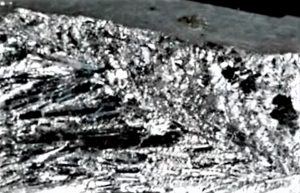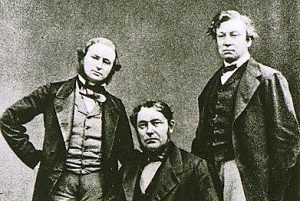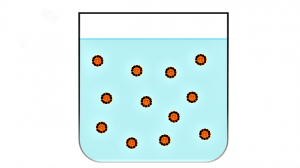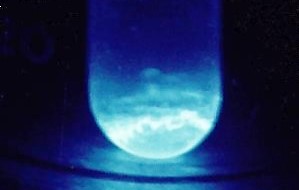Molar volume
In chemistry, it is very important to know the volume of substances used for scientific experiments that merit extreme precision. Since the mole is one of the seven units of measurement of the fundamental physical magnitudes of the International System of Units (SI), it is necessary to know the volume occupied by a mole of a substance in order to be able to work with it in the field of chemistry. In the particular case of molecular gases, a mole contains the value of the number Avogadro (Na) and complying with Avogadro's law, if an ideal gas is in the middle of the same pressure and temperature conditions, the molar volume of this gas will be equal to that of another ideal gas with the same conditions.

- Symbol: Vm
- Unit: L/mol
What is molar volume?
Molar volume is the space occupied by one mole of a substance. This term is used in chemistry to determine the molecular volume reflected in cubic meters per mol (m3 x mol-1). A mole is the unit contemplated by the International System of Units that allows to measure and express a certain amount of substance. The molar volume of an ideal gas under normal conditions (1 atmosphere pressure and 0°C temperature) is equal to 22.4 liters/mol. The molar volume can be calculated in substances in liquid, solid and gaseous states.
It is important to mention that there is a law that determines which are the ideal or perfect gases and the ordinary or imperfect gases in which the value of the molar volume equal to 22.4 liters is not fulfilled. For other substances in solid or liquid state, the molar volume is different and smaller than gaseous substances.
What molar volume is used for
It serves to know the volume that a substance occupies in a certain space. This substance can be in a gaseous, liquid or solid state.
Symbol
The molar volume symbol is Vm.
Molar volume formula
The chemical formula for calculating Volume is V= M/D. In the case of the molar volume it must be taken into account whether these substances are mixtures of gaseous or non-gaseous elements.
In gaseous substances the formula is Vm= V/N. Where V is the Volume and N is equal to the mol/gram number.
It is important to remember that to calculate N, the formula is N= m/M. Where m is equal to the weight of the sample and M is its molecular mass. Another way to calculate N is with the formula N= n° of molecules / Na . Where Na is the number Avogadro which is equal to 6,02 x 1023.
In mixtures or non-gaseous substances they are calculated with the formula Vm= M (mass expressed in moles) / D (density expressed in cm3).
Examples
Some examples of the molar volume of gas, ethanol and oxygen are given below.
Example 1: The molar volume of the gas
When determining the molar volume of a gas it is important to know if they are “ideal or perfect” or if they are ordinary non-perfect gases.
The ideal gases – according to the Avogadro law – under normal conditions of pressure (10^5 pascals) and temperature (273.15 K = 0 °C) is 22.4 liters. This value is the normal molar volume of a gas.
There is a law of ideal gases that makes possible to recognize this type of gas.
In the case of ordinary or non-perfect gases, their molar volume deviates slightly from the value of ideal gases. This is the case of gases such as: Sulphur dioxide (SO2) which has a molar volume of 21.9 L or carbon dioxide (CO2) with a value of 22.3L.
Example 2: ethanol molar volume
Ethanol (CH3-CH2-OH) is a substance that has a molar mass of 46.07 g/mol and a density of 0.789 g/cm3. This substance consists of Hydrogen (H) Carbon (C) and Oxygen (O).
The formula for substances is mass / density. In this sense, in order to know the molar volume of ethane, this formula is applied with the ethanol values.
Vm= 46,07 g/mol / 0,789 g/cm3
Vm= 59.188 cm3 / mole
Example 3: Oxygen molar volume
Oxygen is considered an ideal gas and for this reason its molar volume under normal conditions is 22.4 L per mol. This means that if you want to calculate its exact volume in a quantity X of oxygen liters, you must apply a rule of three like the following:
1Mol —— 22,4L
X ——-N° of liters of oxygen you have.
How to cite this article?
Briceño V., Gabriela. (2019). Molar volume. Recovered on 23 February, 2024, de Euston96: https://www.euston96.com/en/molar-volume/









